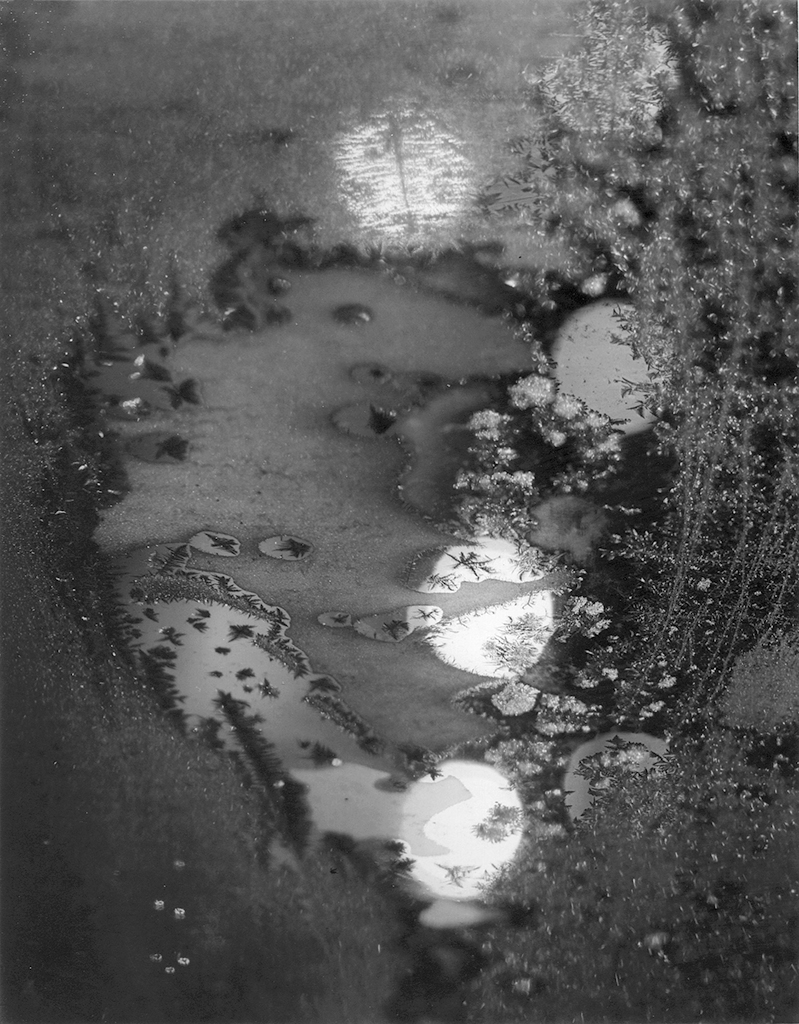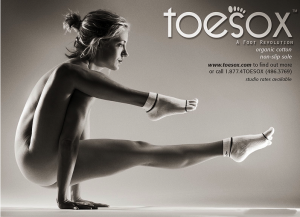
Beginnings, Rochester NY 1962 © Minor White. This photograph hangs in my bedroom. Suggestive of wheels of being, or the chakras of hindu tradition, it has offered me great nourishment and inspiration over many years.
In various forms of meditation, contemplation, or prayer, we reach up as it were to contact and eventually serve levels of being that transcend our current reality. It is an act of devotion. Certain ritual acts, certain words and phrases, and certain kinds of activities are designed to assist our awakening to a higher source. Yet these same words and phrases are being degraded, reduced to the lowest possible level— often through the voices of media and advertising. Explicit allusions to truth, love, and beauty permeate the marketplace, designed to manipulate human sentiment for the basest of reasons. It is an upside-down view of reality.
Over twenty years ago, one of our teachers, Dorothea Dooling, Founding Editor of Parabola Magazine, observed that one of the maladies of modern society could be seen in the flattening of levels, where the higher realities are brought down, stripping them of dimension and meaning. With incisive wisdom, she remarked disparagingly about book or movie titles, and advertising copy that appropriated words and phrases once used to open us to consciousness and awareness and that are now being employed to sell products or lifestyles. And . . . this was long before the popularization of Yoga Journal, exploitive Lululemon promotions, or books like Religion for Dummies.
We recall a former Sanskrit professor shaking his head in disbelief and disappointment after meeting with a journalist carrying a copy of Religion for Dummies. He commented to the class that only in the contemporary West would you see someone so disconnected from faith that they proudly touted a book titled with the words “religion” and “dummies.” He often warned us to be skeptical of modern yoga schools and people claiming to be gurus. He said that the real teaching of yoga was so esoteric that it would be impossible to learn from books or yoga schools that didn’t include a long and in depth study of philosophy.
Somewhere between the dawning of yoga and the present time, we have managed to get lost in our ideas and opinions about what yoga is and what it isn’t. We’ve mistaken yoga for fitness, designer apparel, and proficiency in different combinations of asanas. Spiritual traditions have, quite frankly, entered the marketplace, with many conflicting claims and espoused beliefs, making it difficult for students trying to find their way in the mess of what we refer to as spiritual practice in the postmodern world.
Stillness . . . . . . . . Silence . . . . . . . . The Void . . . . . . . . The Field of Being . . . . . . . . Vision Quest . . . . . . . . The Center . . . . . . . .The Sacred . . . . . . . . .
How often we hear these concepts expressed in a wide range of sources, from traditional sacred texts, to New Age essays or books on self-improvement, and even now in magazines, movies, and television. We even see sacred Om symbols emblazoned on the bumpers of automobiles, chakra symbols adorning clothing, and Tibetan prayer flags prominently displayed in western commercial establishments. Frankly, these words and symbols have become so cliché that in careless, everyday use their original and essential purpose has been lost. But in our experience, they have definite, even precise, meaning. We strongly believe that we must return these ideas to their proper context and place—that these concepts represent an action, an inner movement, and an absolutely necessary quest for us living at the turn of the millennium. The reality of our fragmented selves and fractured world demand that we return to something within us that stands apart from the fray, the struggle for achievement, and the increasing demands of everyday life.
To return to a place within us—to sit quietly and allow the dust to settle—to engage the subtle energies of the body, mind, and feelings—is not a passive exercise, but an active turning toward the still resonances of the interior world. This movement is an essential means of inner transformation, growth and change. Do we want or need to change, as individuals or as a society? Why would we aspire toward this quality of inner silence today? Doesn’t this go against the very grain of modern life? Most of us are certainly not striving to be Zen monks, have not yet joined a religious order, and live quite ordinary, even uneventful lives. We simply want to live our lives, do our work, and get on with it. But if we care about personal and collective healing, if we want inner transformation, then we need to find the way home, forging new connections to the deeper parts of our being and the causal realms of life itself.
From inner quiet, the right, true action arises—a genuine response. Through the field of silence, we hear the subtle voices of intuition, and open to hints of conscience and moments of greater consciousness. We know what is right and true—and we see more clearly our actual condition, with all of its potential and contradictions. Ordinarily, our thoughts turn constantly, our bodies are rarely still, and our emotional nature distracts us from this moment and from our true purpose. The action of sitting quietly, sensing the body, quieting the mind, allows for the emergence of our true Selves and reveals the essential shape of our own mature form of creative expression.
Yoga philosophy asserts that the practice of yoga is quite simply the ability to be completely aware in the present moment. We would like to think that most of us, aside from our personal preferences, opinions, and conflicts with others, engage in contemplative practices with the sincere intention to be more present. How do we nurture authentic awareness? Is it through wearing True Religion jeans or through purchasing clothing from Lululemon. (Lululemon Athletica, purveyor of high end yoga apparel, has been deemed unethical for human rights violations within their China-based factories and for their founder’s racism toward the Japanese)? Students of spiritual practice can easily become confused by the plethora of voices promising instant enlightenment and suffering-free, spiritual disciplines.
Yoga philosophy presents us with a guide for awakening our perception, stating that yoga is essentially the stilling of the mind. The stilling of the mind opens us to an awareness that is choiceless and wordless, one that is not structured on opposing viewpoints of right and wrong, or good and bad. Nor is it one that is attached to concepts like enlightenment or heaven and hell.
True spiritual practice does not seek results and cannot proceed from forced, self-willed efforts. It proceeds from the search for Self and the gentle but firm efforts to engage a contemplative practice. This, and this alone, engenders growth of being, from which certain results may proceed according to one’s temperament. The practice of sitting quietly, of returning to the subtle inner sensations, we liken to watering this young growth, giving it nourishment and sunlight—and simply providing the necessary conditions for growth to occur. The seminal work outlined here can be defined by the wisdom found in four simple words from the Christian tradition: Be still and know.
Be courageous and discipline yourself…
Submit to a daily practice.
Your loyalty to that
is a ring on the door.
Keep knocking, and the joy inside
will eventually open a window
and look out to see who’s there.
Rumi, from The Essential Rumi, translations by Coleman Barks
Adapted in part from The Widening Stream: the Seven Stages of Creativity by David Ulrich and LauraDunnYoga blog.

